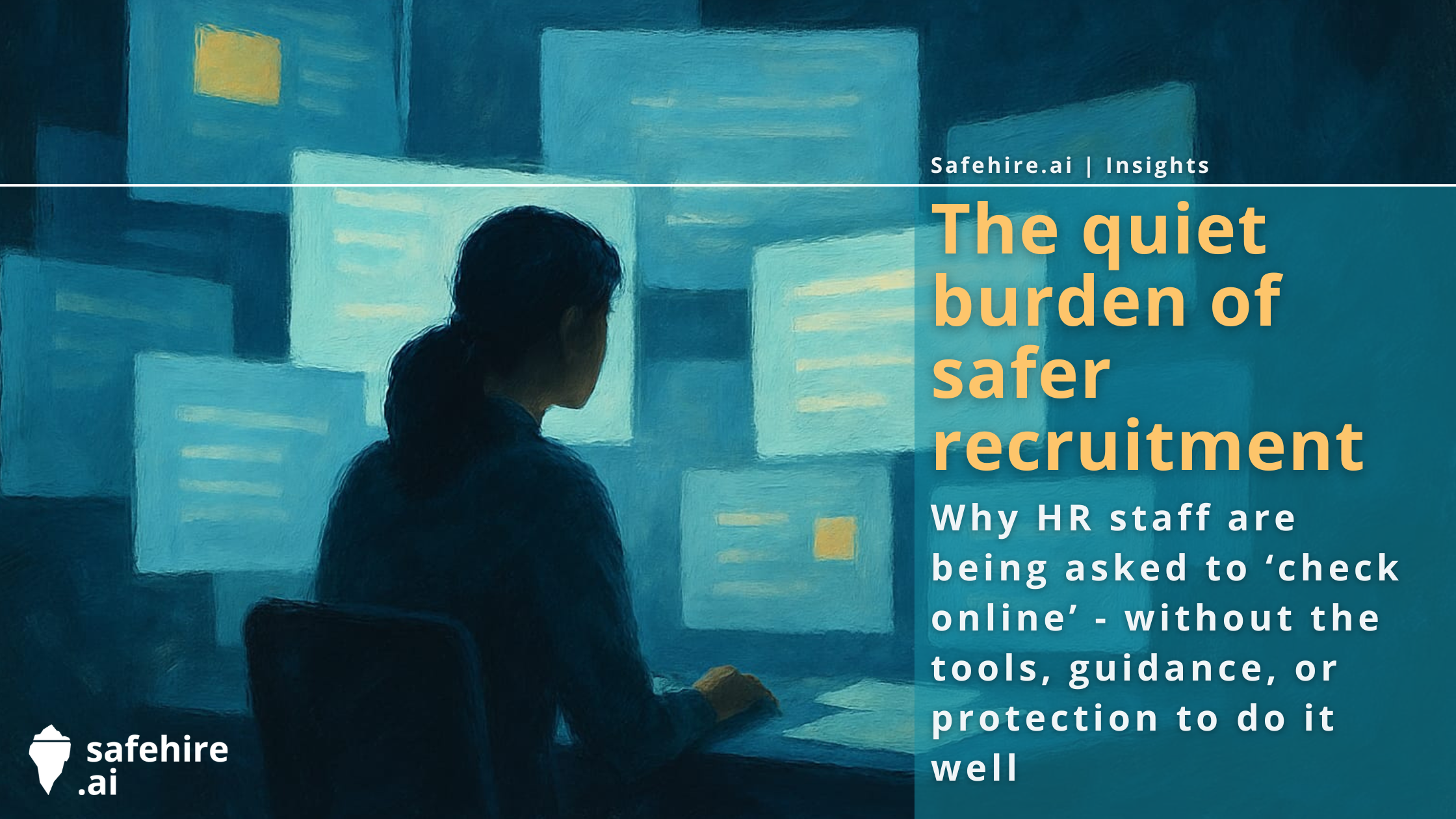The Quiet Burden of Safer Recruitment
Across the UK, HR managers, business officers, and school administrators are being handed responsibility for a growing, and largely undefined, safeguarding task: conducting online checks during recruitment.
But unlike the DSL, whose role is detailed in statute and clarified in training, the HR lead gets just a few lines in KCSIE, and a whole lot of ambiguity.
Held Responsible. Left Unsupported.
The idea behind online vetting makes sense. Safer recruitment should mean screening for more than just formal convictions. But in practice, it’s left HR leads to read between the lines of policy and improvise the execution.
Some Google names. Others ask IT to run a quick search. Some skip it altogether, too worried about crossing a line or opening a safeguarding can of worms they aren’t trained to interpret.
As one administrator told us:
“It’s safer not to check than to get it wrong.”
That’s not a solution. That’s a silent crisis.
A Policy Gap with Real-World Consequences
KCSIE mentions that schools should consider checking a candidate’s online activity, but gives no detail on what that should involve, where the boundaries lie, or what to do with what you find.
This puts HR in an impossible position. They’re expected to find digital warning signs, without guidance, tooling, or the safeguarding experience to know what matters.
Even worse, if something slips through the cracks, the accountability often lands on them.
This Isn’t Just an Admin Problem
Safer recruitment isn’t just about paperwork. It’s about protection.
Traditional checks - DBS, references, qualifications, look backwards. But risk doesn’t just live in the past. It shows up in anonymous forums, encrypted channels, dark web aliases, and behavioural signals that never reach an official record.
The intent behind the guidance is right. But intent without infrastructure is risky.
From Guesswork to Intelligence
This is where SafeHire comes in. Our dark web intelligence engine scans thousands of sources for early indicators of risk that traditional checks miss. It flags signals of concern, from aliases and hidden accounts to engagement with known harmful content.
But here’s the difference:
Every insight is verified by trained safeguarding analysts before it reaches you.
You get a clear, human-readable report, not a list of search results.
It’s not about replacing HR judgement. It’s about augmenting it with the kind of intelligence you can’t get from Google.
The Real Cost of Inaction
HR leads didn’t sign up to be digital investigators. But the system now expects it, without saying it aloud.
If we’re serious about safer recruitment, we can’t keep asking people to do the heavy lifting without giving them the right tools.
This isn’t about tech. It’s about trust.
The first step in protecting your school is making sure every adult who walks through the door is safe.
Want to see how Safehire.ai can help your organisation?

-2025.png)

.png)
.png)


